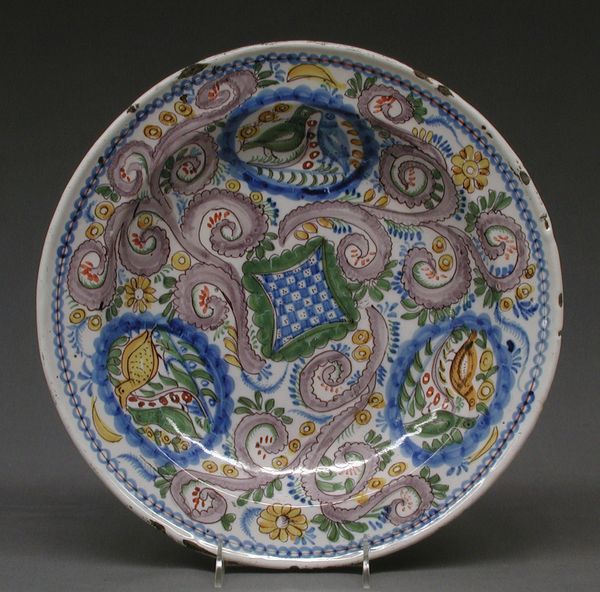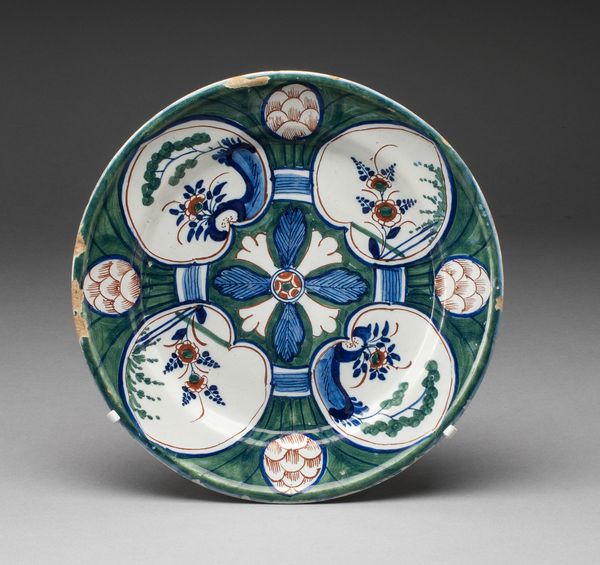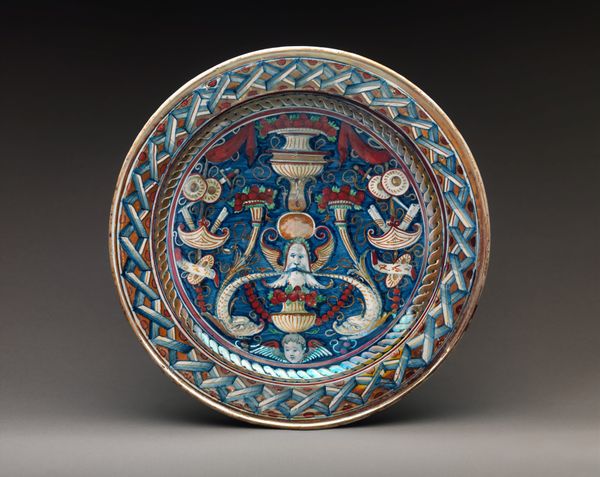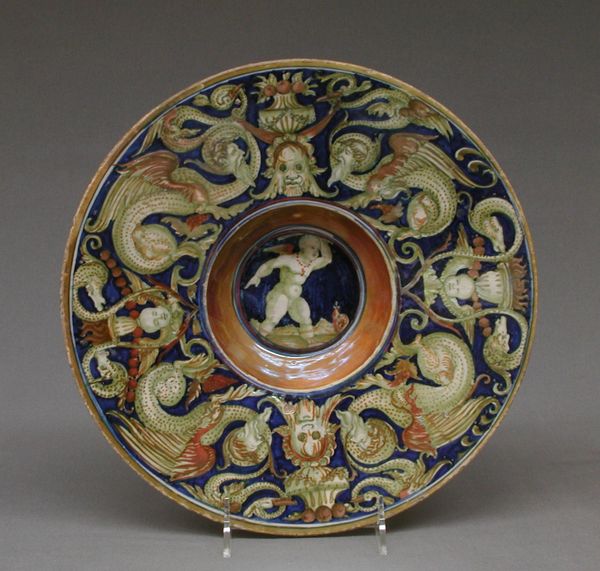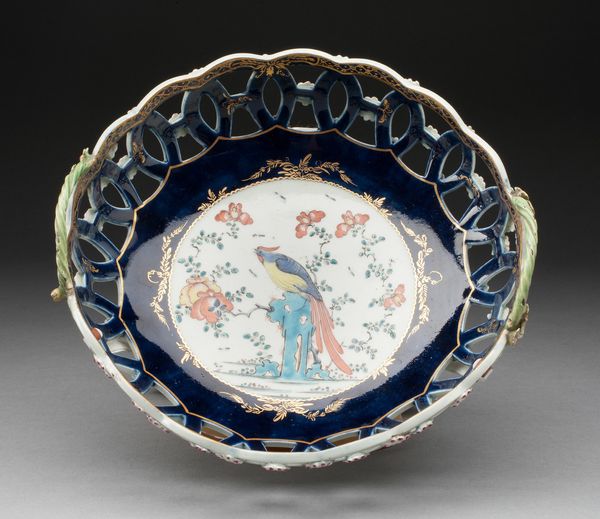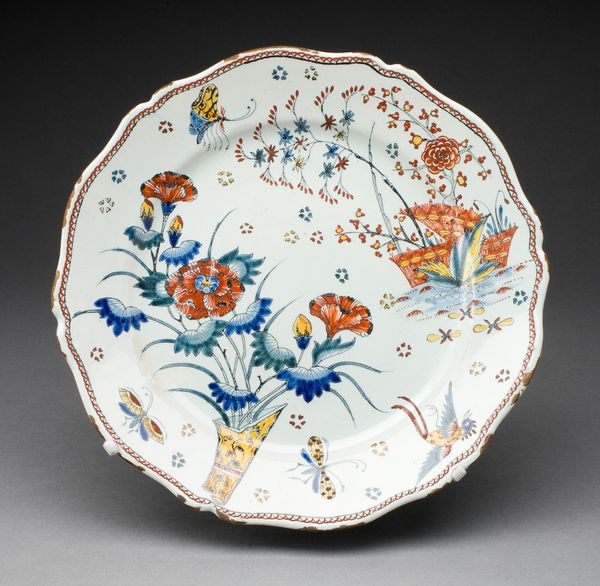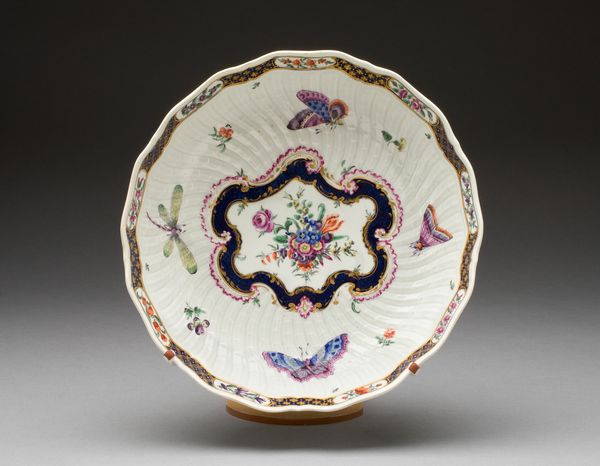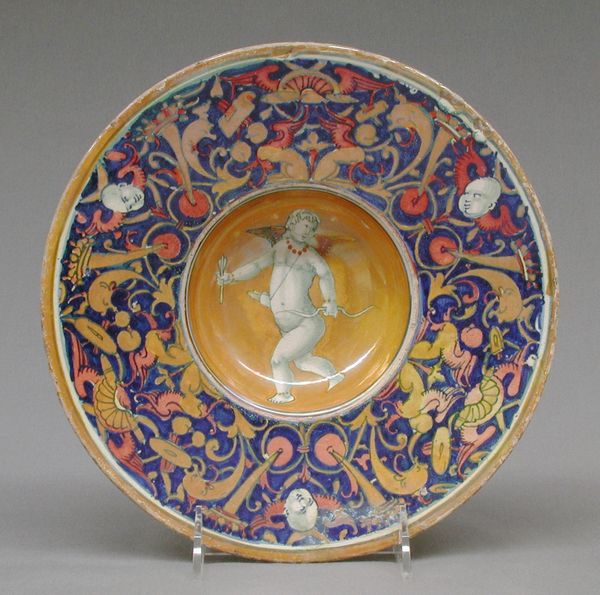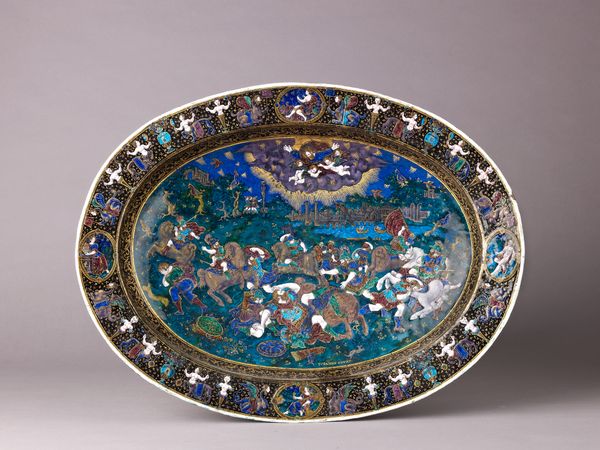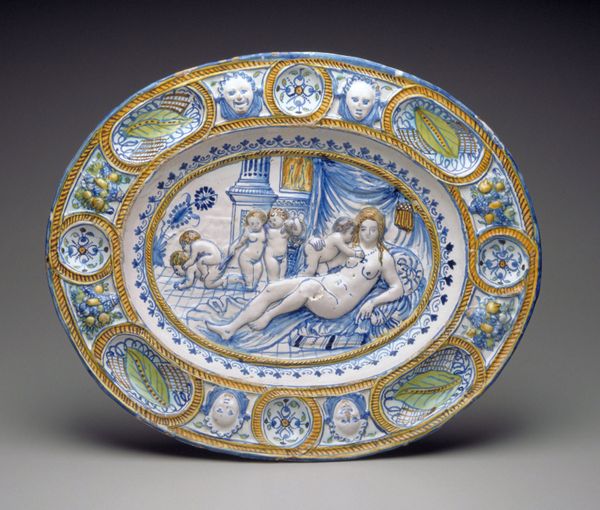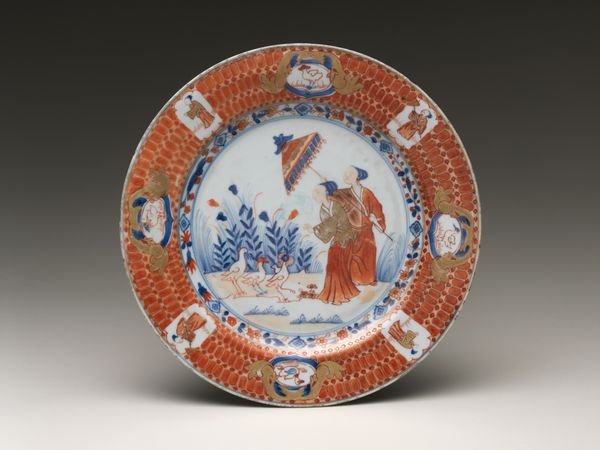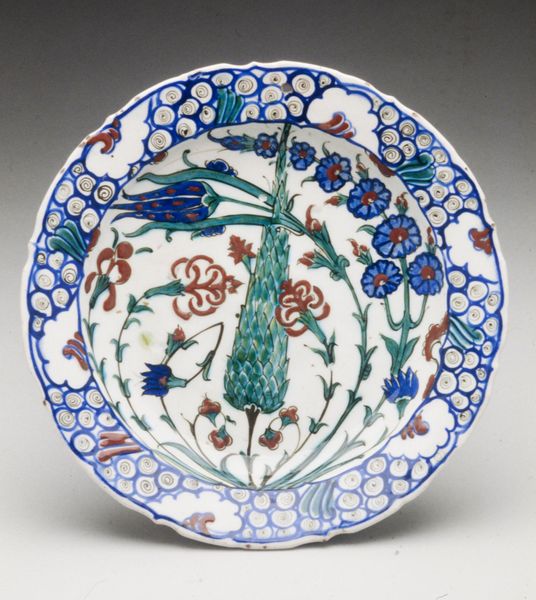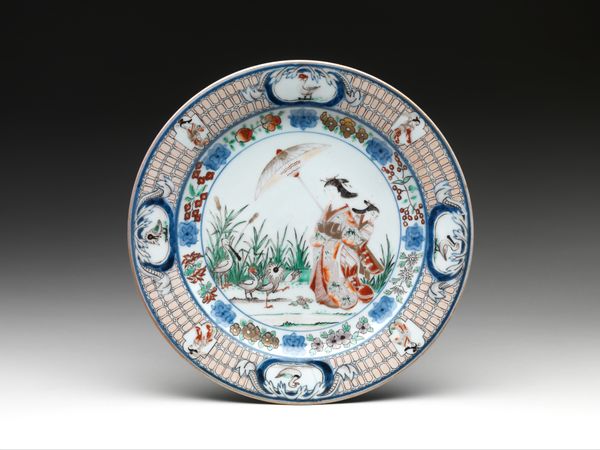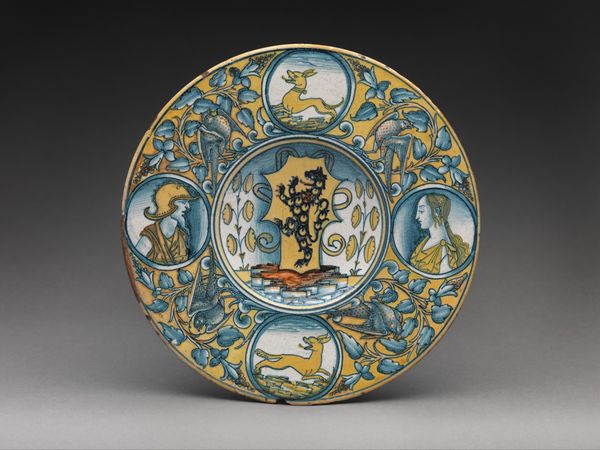
ceramic
#
3d sculpting
#
decorative element
#
egg art
#
3d printed part
#
product fashion photography
#
ceramic
#
jewelry design
#
sculptural image
#
stoneware
#
ceramic
#
decorative art
Dimensions: 3 1/2 x 8 in. (8.89 x 20.32 cm)
Copyright: Public Domain
This Mina’i ware bowl, of unknown date and maker, is constructed from fritware and painted with enamel and gilding. Mina’i ware emerged in Persia during the 12th and 13th centuries, a time of cultural exchange and upheaval. Under the Seljuk dynasty, Persian art flourished, absorbing influences from Central Asia and beyond. The intricate polychrome decoration—a technique that allowed for complex figural representation—reflects a society where courtly life and epic narratives were celebrated. Yet, this bowl exists because of the labor of anonymous artisans, whose identities are lost to history. This bowl’s central image depicts two horsemen flanking a tree, perhaps drawing from Persian legends or courtly scenes. The image invites us to consider the bowl's function: was it a luxury item made for the elite, or was it intended to commemorate cultural and political events? Looking at the inscription around the rim, one can only wonder about the stories and aspirations it once conveyed. The bowl becomes a vessel filled with the untold experiences and perspectives of people living in a complex, ever-changing world.
Comments
minneapolisinstituteofart almost 2 years ago
⋮
The theme of two horsemen on either side of a tree frequently appears on mina'i ware. It might have alluded to a hunt scene, a luxury enjoyed by the princely classes.
Join the conversation
Join millions of artists and users on Artera today and experience the ultimate creative platform.
